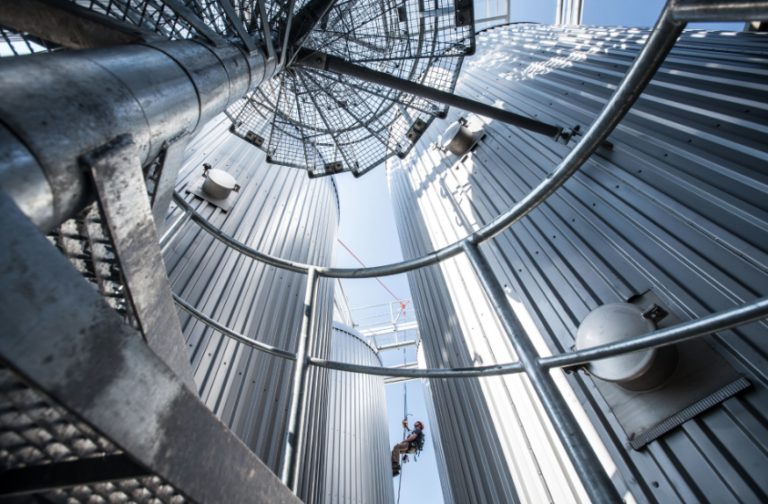Equipment Safety Factors in Technical Rope Rescue
Ensuring safety in technical rope rescue starts with understanding and applying proper safety factors. This process includes selecting compatible equipment, ensuring the gear can handle anticipated loads, and maintaining a safety margin for unforeseen forces. By doing so, rescue teams can create systems that are both reliable and efficient, minimizing risks during critical operations.
Categories of NFPA 2500 Equipment
The NFPA 2500 Standard organizes rescue equipment into three distinct categories, providing a foundation for selecting the right tools for specific applications:
- General (G):
- Designed for moderately trained technicians who may not calculate system limits but rely on robust, overbuilt equipment.
- Provides a safety buffer to prevent overloading during operations.
- Ideal for large-scale rescue efforts where simplicity and durability are key.
- Technical (T):
- Targeted for advanced technicians who can analyze and calculate system performance.
- Focuses on lightweight, efficient gear capable of handling tasks with precision.
- Requires deeper knowledge of system dynamics and the ability to mitigate risks with less equipment.
- Escape (E):
- Developed for emergency, single-person evacuations.
- Designed for quick deployment under extreme conditions.
- Lower strength ratings reflect its limited and temporary use.
These categories set minimum performance criteria but are not comprehensive enough for all operational needs. Teams must go beyond the labels, incorporating load ratios and specific ratings into their planning and analysis.
Load Ratios and Strength Ratings
Understanding equipment strength ratings and their application in rescue scenarios is critical:
- Minimum Breaking Strength (MBS): The force at which a piece of equipment will fail. This is the maximum load the gear can withstand before catastrophic failure.
- Safe Working Load (SWL) or Working Load Limit (WLL): A fraction of the MBS that indicates the maximum load the equipment can safely handle during operation.
The concept of System Safety Factor (SSF) bridges the gap between theoretical strength and real-world application:
- Static SSF: Reflects the ratio of system strength to normal, steady loads, ensuring equipment can handle routine operations.
- Dynamic SSF: Accounts for unpredictable forces like falls, jerks, or shifts, which can drastically exceed static loads.
Dynamic safety factors are especially important in technical rope rescue, where sudden movements or falls can create forces far greater than those encountered during static conditions. Many teams use a 2:1 dynamic SSF as a minimum benchmark, with adjustments based on operational conditions and equipment.
Key Strength Ratings in Rope Rescue
To design safe and efficient systems, rescuers must familiarize themselves with common strength ratings:
- 40 kN: NFPA General-use carabiners.
- 36 kN: NFPA General-use pulleys and anchor plates.
- 22 kN: NFPA Technical-use carabiners.
- 20 kN: NFPA Technical-use rope.
- 22.2 kN (5,000 lbf): OSHA standard for industrial equipment.
- 18 kN: NFPA Technical-use pulleys.
Understanding these ratings helps technicians make informed decisions about load distribution, anchor points, and overall system performance.
Static vs. Dynamic Forces
While static forces are predictable and steady, dynamic forces can be sudden and unpredictable, often exceeding static forces by significant margins. For instance:
- A single-person load (100 kg or 220 lbs) exerts a 1 kN static force.
- A two-person load (rescuer and patient) doubles this to 2 kN.
- Dynamic forces generated by a fall or sudden stop can multiply these loads exponentially, creating peak impact forces that far exceed static calculations.
Accounting for dynamic forces requires careful equipment selection, proper system design, and rigorous training.
Global Standards: NFPA vs. European Systems
The NFPA 2500 Standard assumes higher design loads, reflecting the rigorous demands of U.S. rescue scenarios, which often involve heavier loads, longer evacuations, and less predictable environments. By contrast, European standards often assume lighter loads and shorter, more controlled evacuations. This disparity poses challenges for international teams or manufacturers aiming to meet both sets of standards.
NFPA 2500 and Related Standards
The NFPA 2500 standard integrates key guidelines for technical rope rescue, combining elements from three previous standards:
- NFPA 1983: Life Safety Rope and Equipment for Emergency Services.
- NFPA 1670: Operations and Training for Technical Search and Rescue.
- NFPA 1858: Selection, Care, and Maintenance of Life Safety Rope and Equipment.
Investing in this comprehensive document equips rescue teams with the knowledge to design, maintain, and operate safe and effective systems.
Real-World Applications: Load Ratios and Safety Factors
While safety factors like 15:1 were once common, modern teams often aim for more realistic ratios like 5:1, 7:1, or 10:1, depending on their training and operational needs. These ratios strike a balance between safety and efficiency, ensuring systems are strong enough without becoming overly cumbersome.
Example Application:
- Static SSF: Calculated as the ratio of system strength to anticipated static loads.
- Dynamic SSF: Analyzed by assessing the system’s performance under worst-case dynamic conditions, such as a fall during a lowering operation.
Conclusion: Knowledge as the Best Safety Tool
Technical rope rescue relies on more than just strong equipment—it demands a deep understanding of system dynamics, load calculations, and operational standards. By mastering these principles and adhering to guidelines like those in NFPA 2500, rescue teams can ensure their operations are both safe and effective.
Explore More Resources:
Peace on Your Days,
Lance










